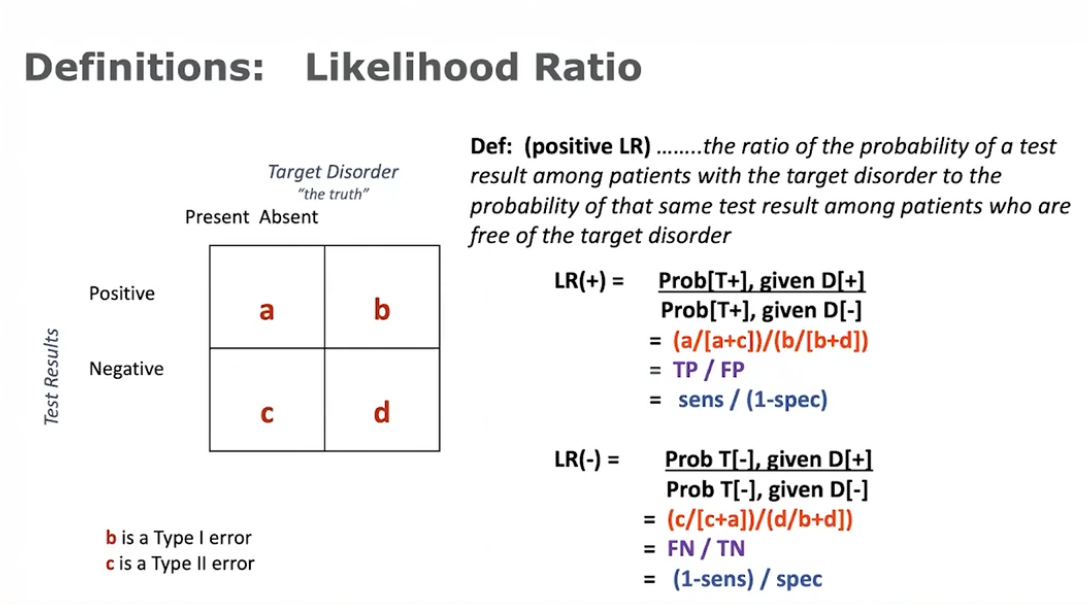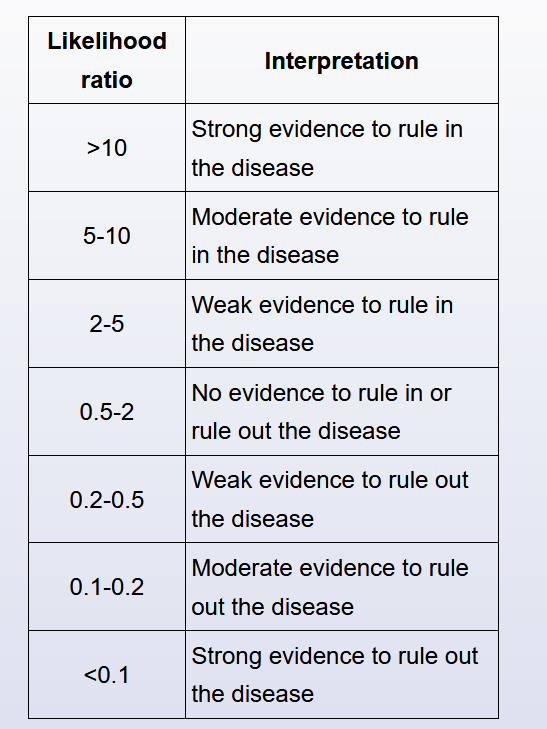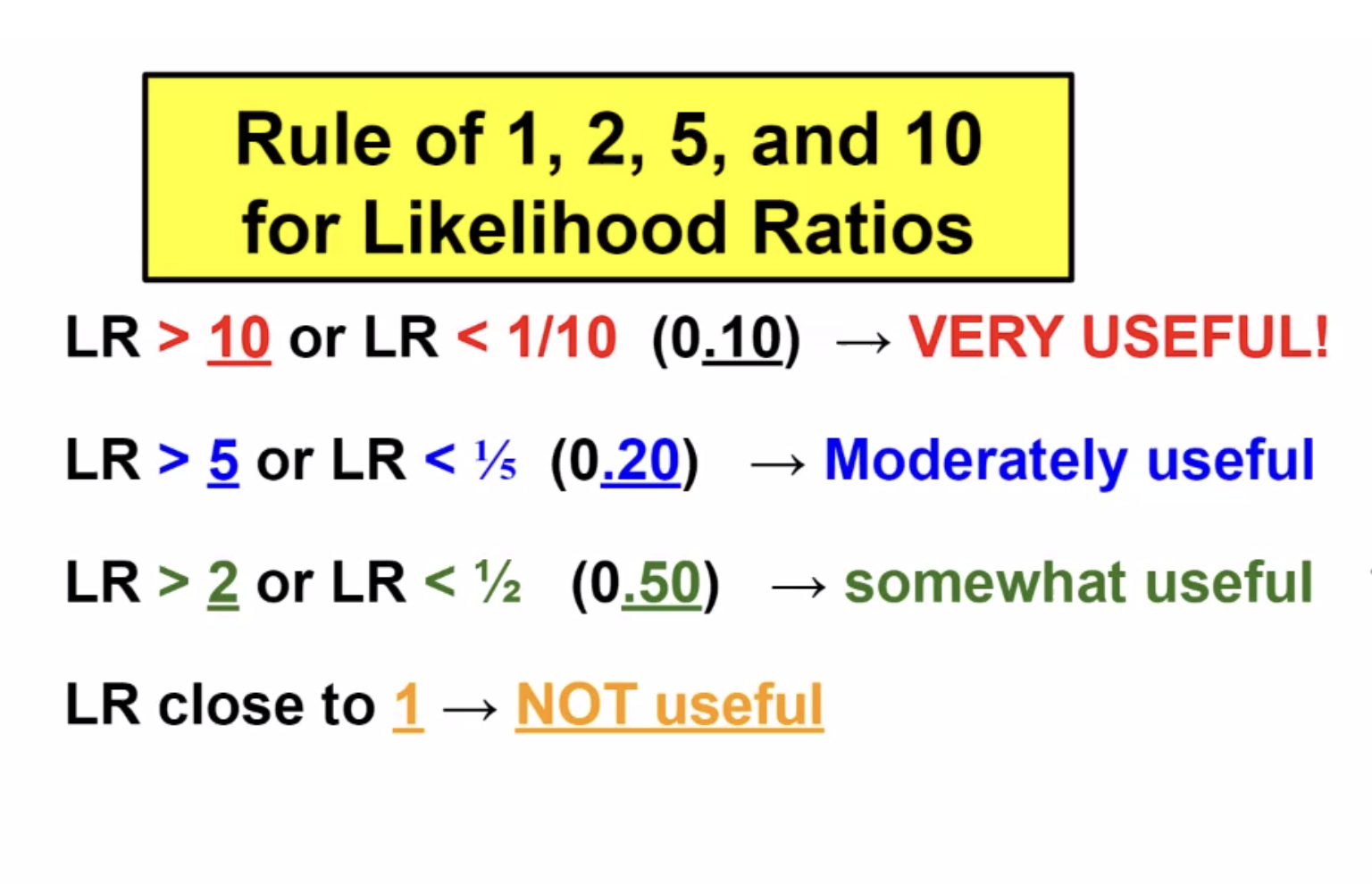likelihood ratios
- related: Biostats and Study Design
- tags: #literature #pulmonology
Likelihood ratio

The likelihood ratio (LR) is defined as the probability of a given test result occurring in a patient with a disorder compared to the probability of the same result occurring in a patient without the disorder.
The likelihood ratio (LR) is an expression of sensitivity and specificity that can be used to assess the value of a diagnostic test. The positive likelihood ratio (LR+) represents the value of a positive test result, and the negative likelihood ratio (LR-) represents the value of a negative test result.
LRs can range from 0 to infinity. A test result with a LR >1 suggests disease presence; the higher the LR, the more likely the disease presence. A test result with a LR <1 argues against the disease; the lower the LR, the less likely the disease presence. There are general guidelines for LR interpretation (Table).
LRs are calculated from sensitivity and specificity:
- For a positive test result: Positive LR = sensitivity / (1 – specificity).
- For a negative test result: Negative LR = (1 – sensitivity) / specificity.
Just as sensitivity and specificity are independent of disease prevalence, LRs do not change with the prevalence of the disease. In addition, LRs can be used to calculate post-test odds (post-test odds = pre-test odds * LR), providing clinically relevant information for individual patients based on their pre-test odds of disease.
Other advantages of LRs are that they can be used with tests that have >2 possible test results and they can be used to combine the results of multiple diagnostic tests. For all these reasons, LRs would be the most appealing choice for the government agency officials in this scenario.

